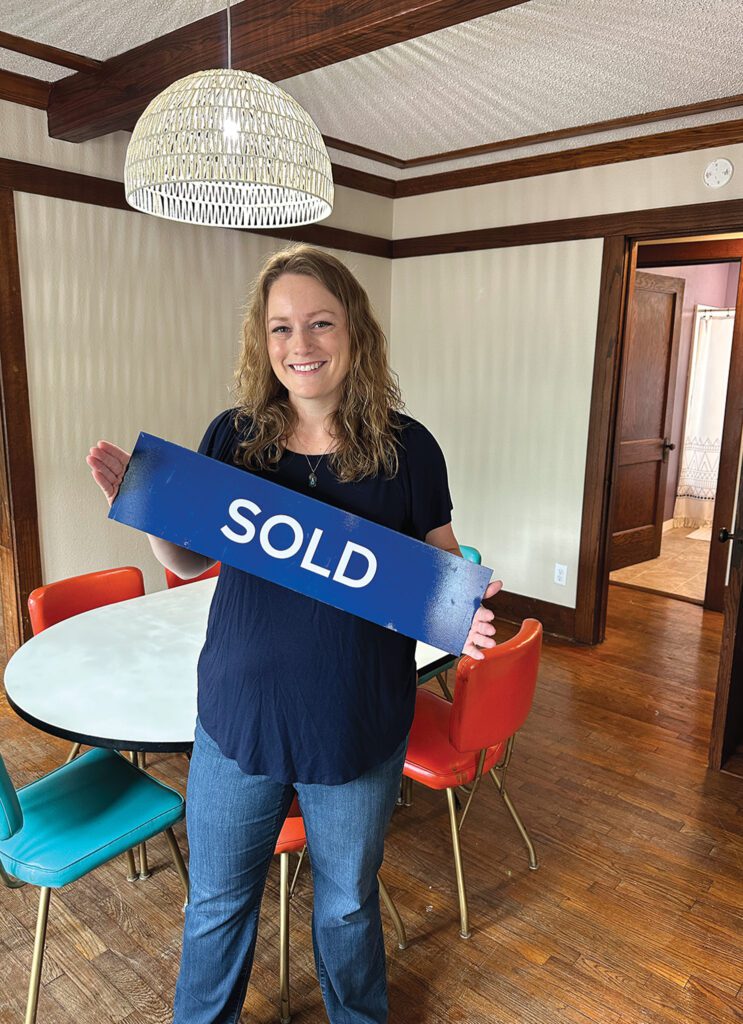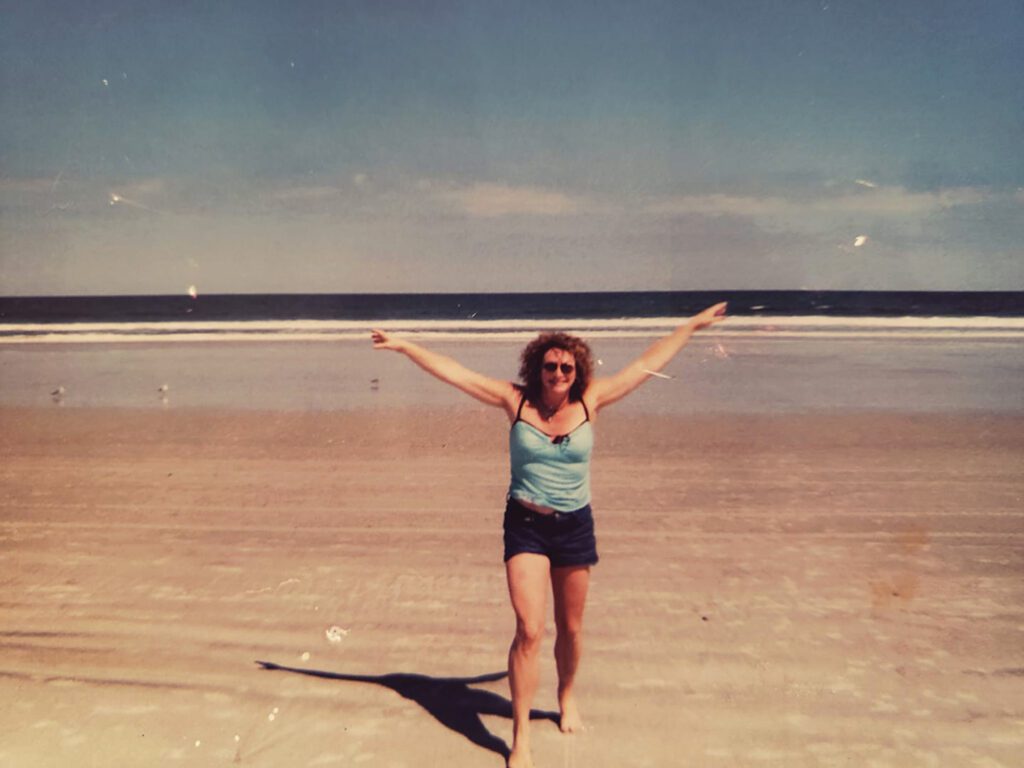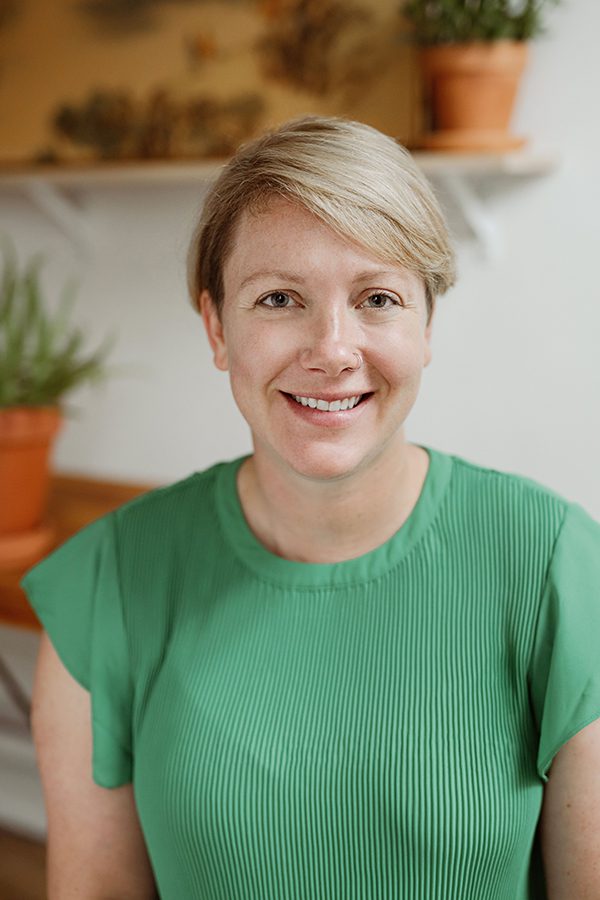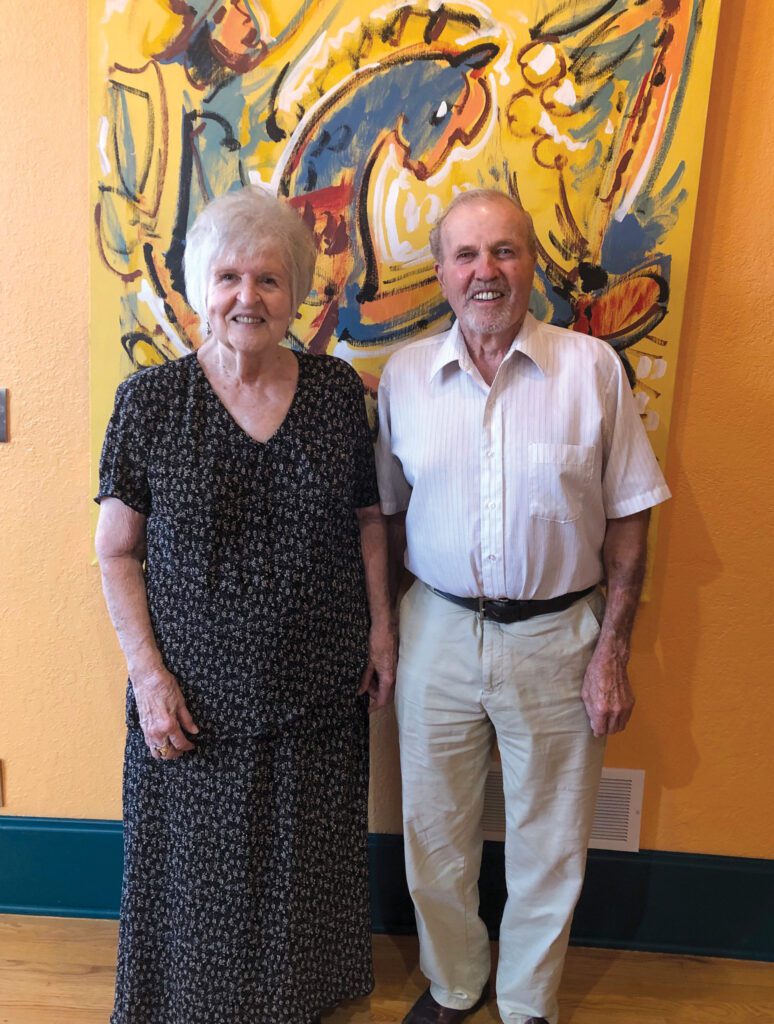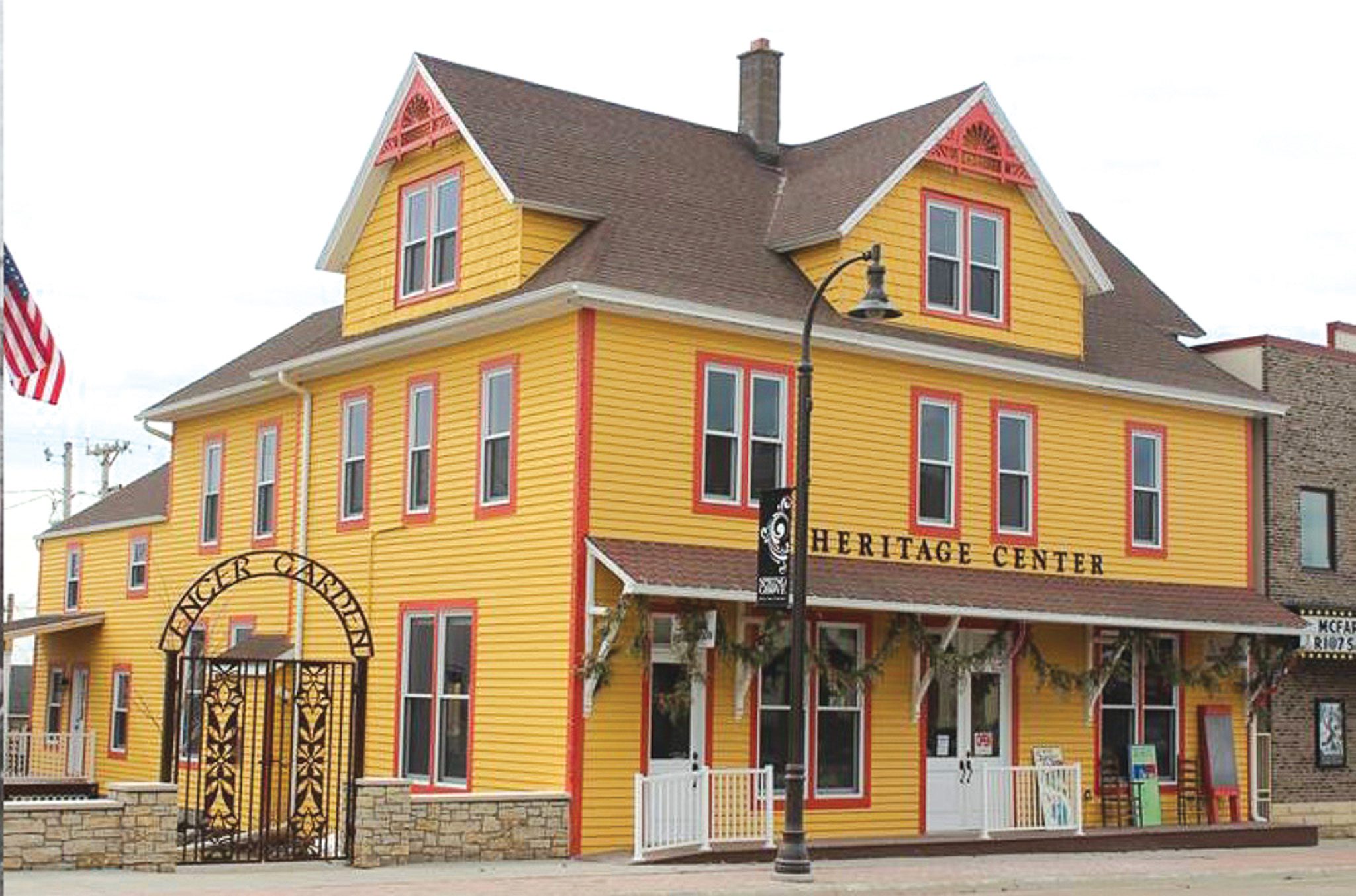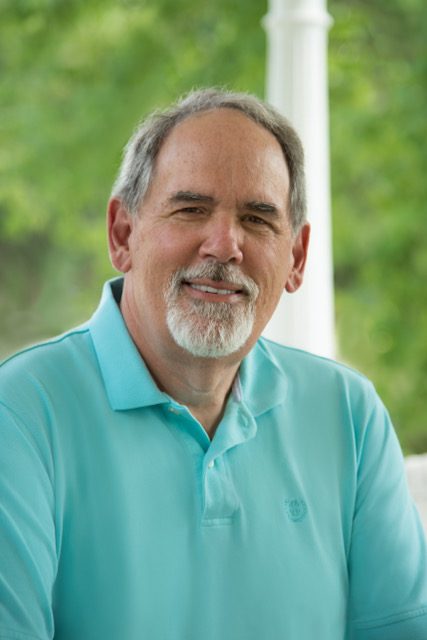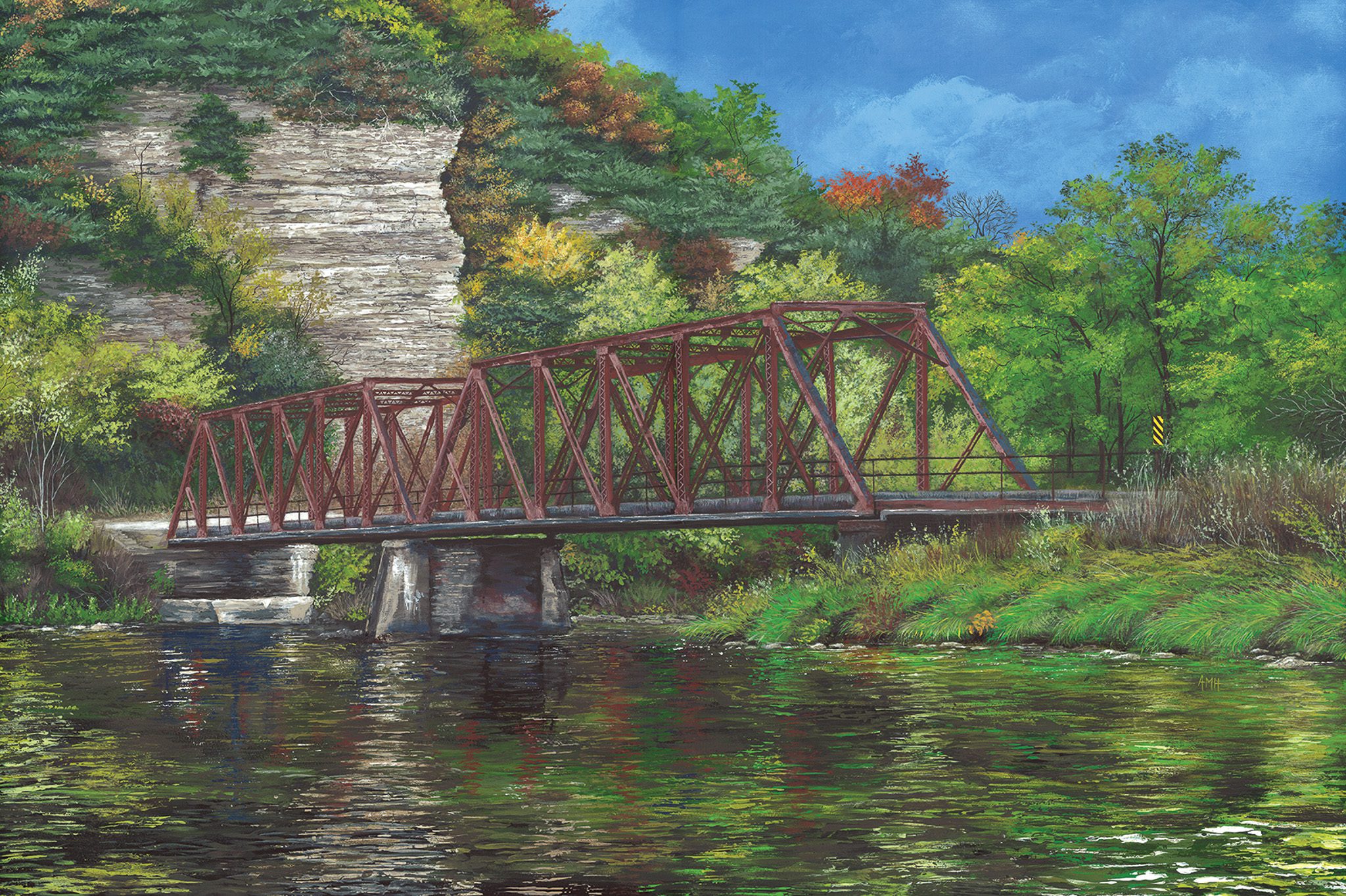
Decorah artist Angie Herrmann has embedded painting into everyday life. Perhaps it’s this real-life aspect of her work that makes it strike such a chord with many in the region.
First of all, there’s where she paints: Preferably outside on her home’s front porch, overlooking the Minowa Heights neighborhood. “I love to be outside as much as possible,” Angie says. “The light is good, and the sounds are peaceful.”
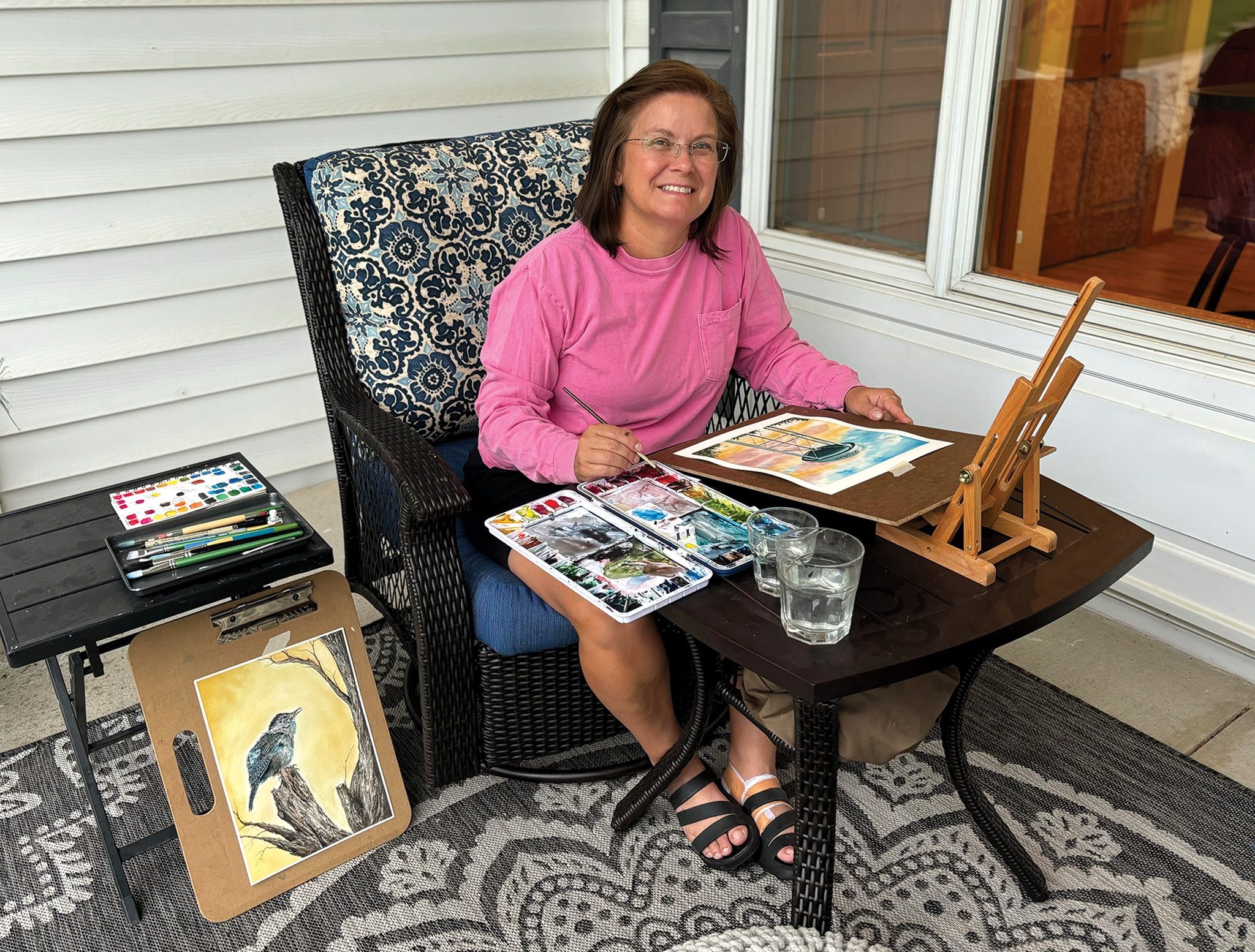
In inclement weather, you’ll find her working on one of several paintings-in-progress near the large windows in her open kitchen – a fitting location for a person who has had a 30+ year career in kitchen design. Plus, she can add a few brush strokes while supper is simmering on the stove.
“The inspiration is everyday life, and our area is such an inspiration,” Angie says.
This is obvious in the subjects of Angie’s painting: the Decorah water tower. The “Thor” sculpture at the high school athletic complex. Dogs, cats, birds – animals of all kinds. Hay bales in a field. The Upper Iowa River winding past fields, bluffs, and bridges.
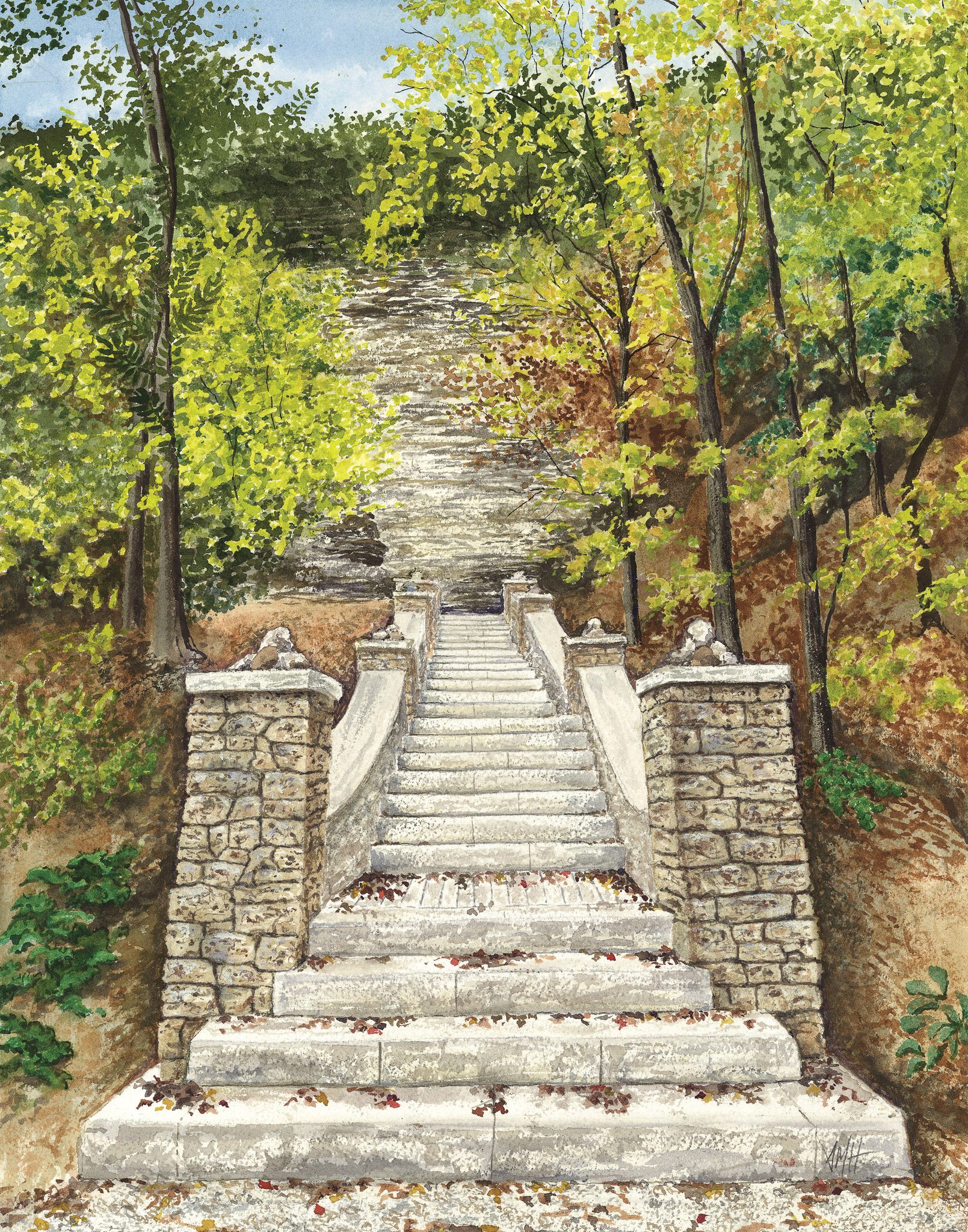
Becoming a Painter
Angie grew up in Marion, Iowa. She studied interior design at Hawkeye Community College in Waterloo and then moved to Decorah to work for Brown Builders, which is no longer in business, but had a showroom downtown at the time. She calls the late Willie Brown, who recruited her and became her mentor, her “Decorah dad.” This launched her into a decades-long career as a kitchen designer and project manager.
While Angie initially missed living in a bigger city, she grew to quickly love the Decorah community. And it was an ideal place for her and her husband, Scott Herrmann, a career law enforcement officer, to raise their two daughters, who graduated from high school in 2015 and 2019.
Fast forward to 2020 and the COVID pandemic. While Angie and Scott had been empty nesters, with one daughter in college and the other teaching, circumstances brought the girls home for a time. They enjoyed hiking and exploring many area parks, where they encountered Decorah Rocks, rocks painted and hidden for anyone to find and post about in a Facebook Group. Angie decided to give rock painting a try.
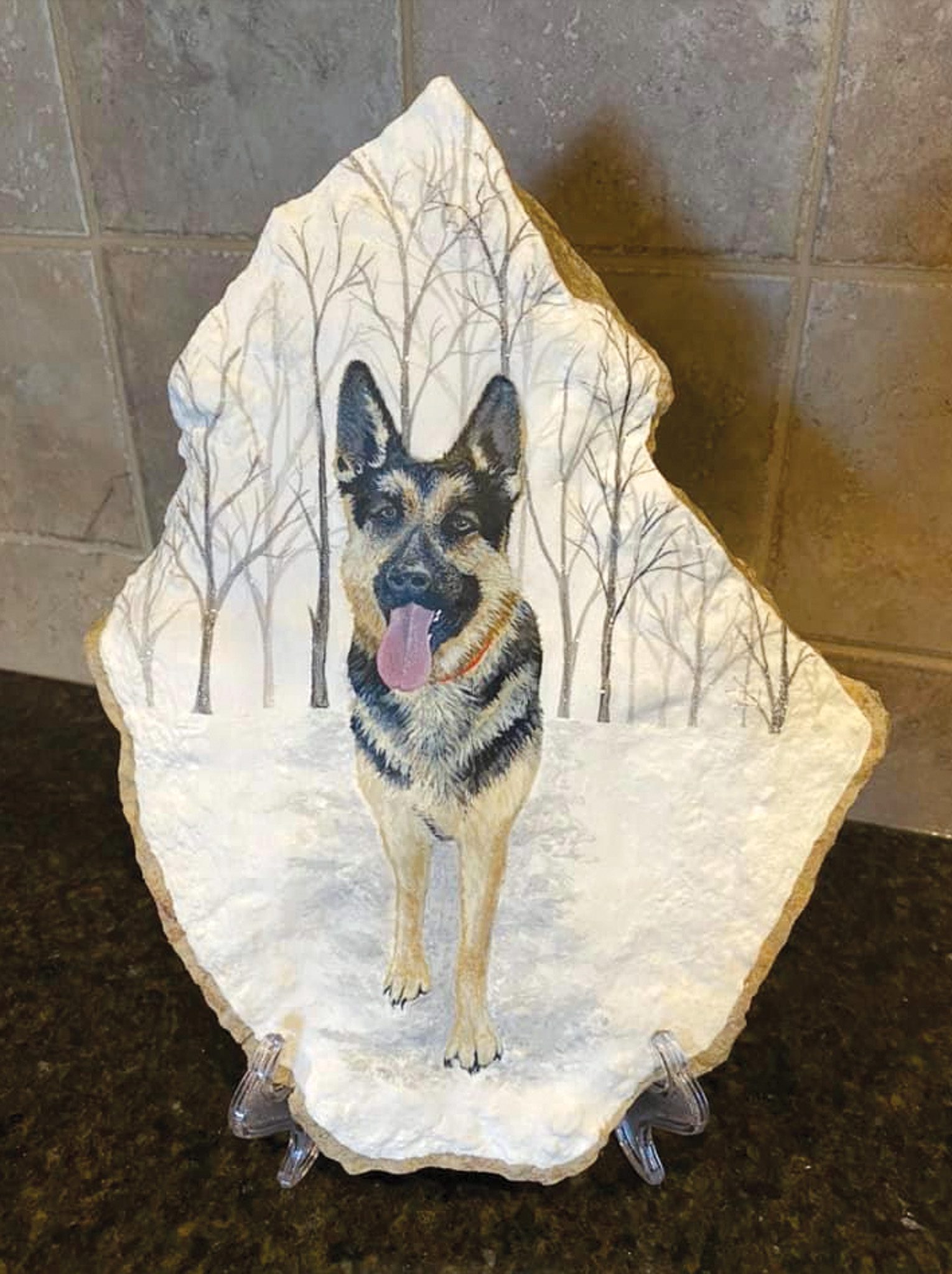

“Rocks were less intimidating for a beginning painter,” she says, compared to starting with a blank canvas. “And the rocks I was painting always kept getting bigger!”
Her charming paintings quickly gained popularity as she posted pictures online. She decided to launch a Facebook page as Barefoot Studio, named after her favorite wine and because she likes to paint outside, barefoot. Requests and commissions started coming in, the most frequent of which were pet portraits, now one of her mainstays. Eventually, Angie began to paint local landmarks like Dunning’s Spring and Pulpit Rock, constantly working on her technique and growing her abilities.
These beloved local scenery paintings really connected with folks.
“It’s so interesting to hear everyone’s story of what these places mean to them,” Angie says. “They fished by Lundy Bridge with their dad growing up, or they got married at Siewers Spring or Boulder Roll or the butterfly garden, or Van Peenen was their favorite place to hike or walk their dogs.”

Angie also loves to paint wildlife, especially birds and owls. “Weather the Storm,” featuring an owl on a bare branch amidst a snowy landscape, was painted as a gift for her future son-in-law. Her latest owl painting, “Among the Evergreens,” delicately layers green for a more springy effect.
Angie donates proceeds from her work to local nonprofits such as the Humane Society of Northeast Iowa and Decorah’s ArtHaus. Her big goal is to one day establish a college scholarship.
Growing in Technique and Subject
Angie started off with tools she found most comfortable. “I started painting with acrylics – that’s why I often call it my ‘first language.’ If I don’t like it, I can paint over it easily. And I often do,” she says. She also chose to paint on a smooth surface that was part of her everyday life: medium density fiber (MDF) board, a building material that’s part of her kitchen design practice. She is self-taught, picking up techniques by watching YouTube videos, always willing to experiment and learn as she goes.
That said, when Angie was at Hawkeye Community College, pre-computer renderings, she created her interior design projects with watercolors. And in more recent paintings, Angie has started exploring watercolors again, enjoying the somewhat unpredictable play of water and color on paper.
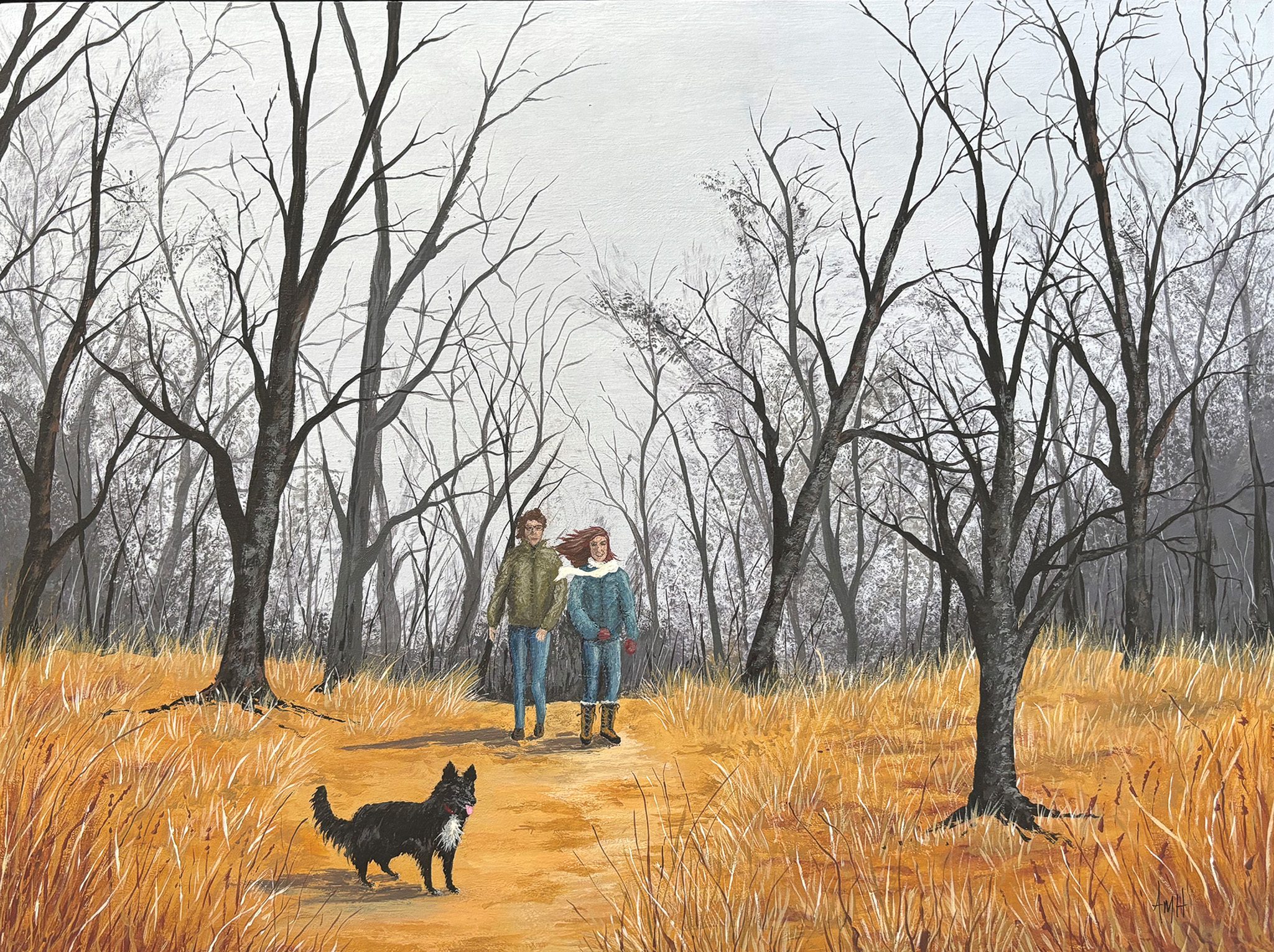
“It’s a learning experience, and everyone needs to continue learning,” she explains. Plus, watercolors are more compact – perfect for adventures away from Iowa. “When we travel each winter to Gulf Shores beach in Alabama, watercolors are easy to take along and work on studies with a very different setting,” Angie says.
She’s also expanding her subject matter beyond landscapes and animals. “My latest inspiration is people doing the things they love,” she says.
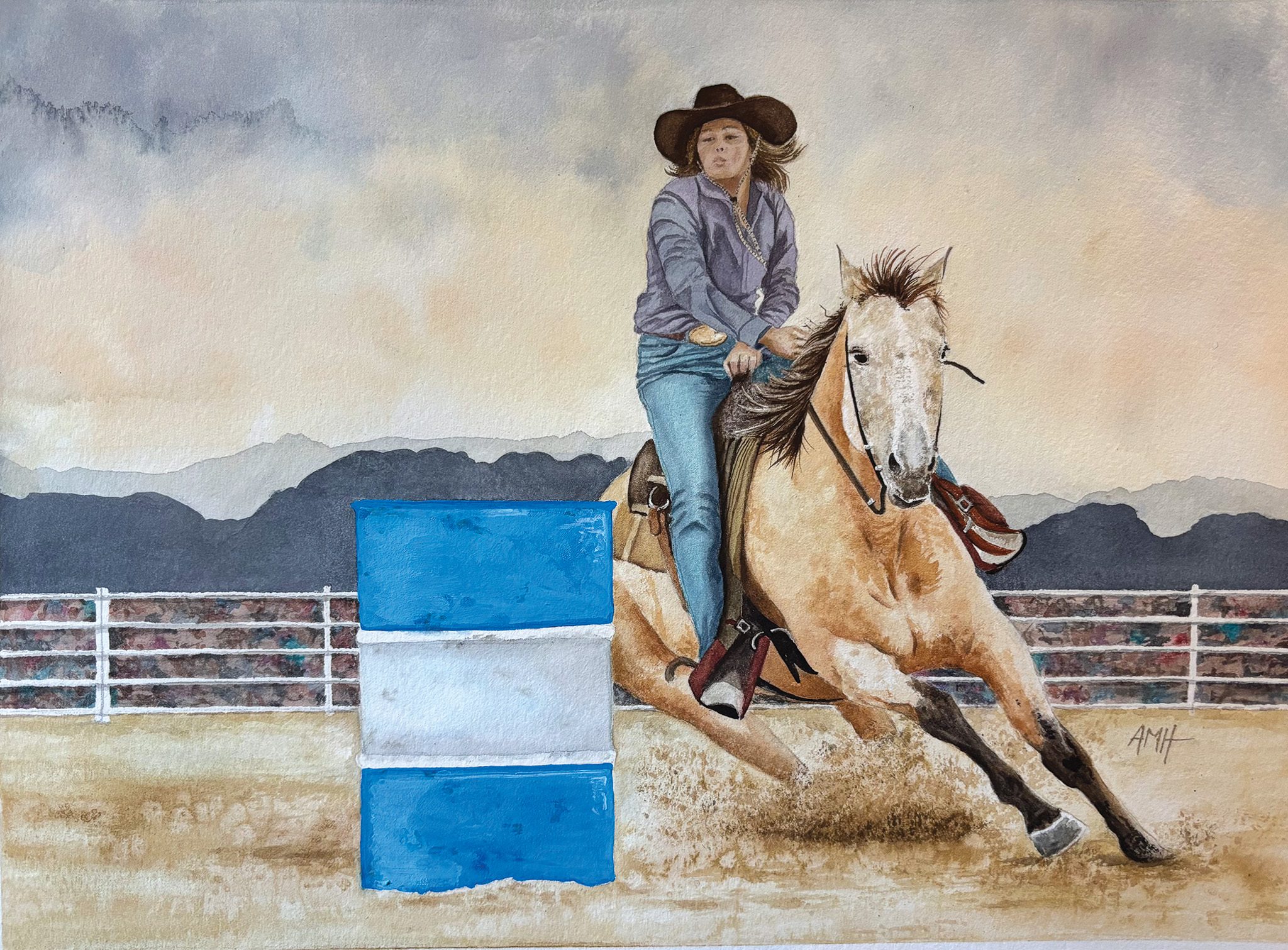
She has really enjoyed portraying people – something that seemed intimidating in the past – generally painting portraits from photos. A photo of her daughter’s niece was painted into a piece that won third place in the Iowa Artists state competition. A shot of a barrel racer at the Decorah Fire Department’s Bull Bash became a painting that gracefully captures the energy and focus of the moment the rider and horse round a bright blue barrel. And most recently, Angie finished a piece featuring Decorah’s Nordic Dancers, a challenging painting full of movement.
Folks can see Angie and her work in person this fall at the Northeast Iowa Artists’ Studio Tour, an annual self-guided tour that gives everyone the chance to meet artists and watch them create in their own spaces. 2025 will be Angie’s second year on the tour. Her stop will feature painting demos and a transformed lower-level gallery full of paintings for sale as well as several types of prints, magnets, and notebooks.
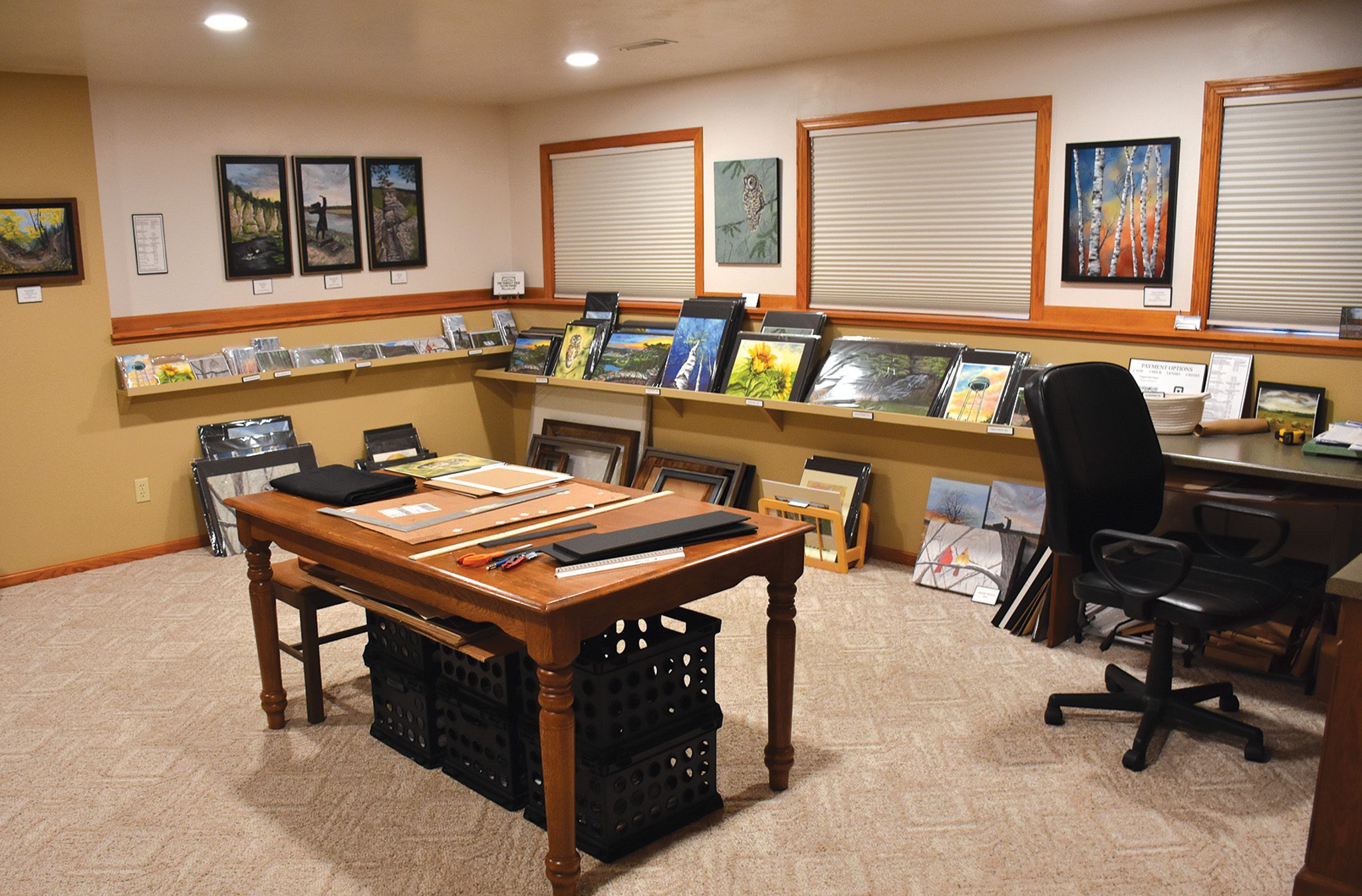
What keeps her motivated to pursue a painting practice in addition to her full-time work? For her, it’s all about the fun of it. “I like to keep busy, and I don’t like to watch TV,” she explains. “I don’t look at the world like everyone else. I look at how the light is hitting things, taking pictures, always looking for inspiration.”
Once she’s found her inspiration, she takes delight in capturing sunflowers, birch trees, and chickadees, sun shining through petals, shadows cast on the ground, the exact geometry and color of an aging iron bridge, reflections of autumn leaves on the river.
“That’s where I’m at, always learning something new. It might be risky, it might be scary, but I just do it. People often ask me if I have a favorite painting. My answer is: I haven’t painted it yet.”
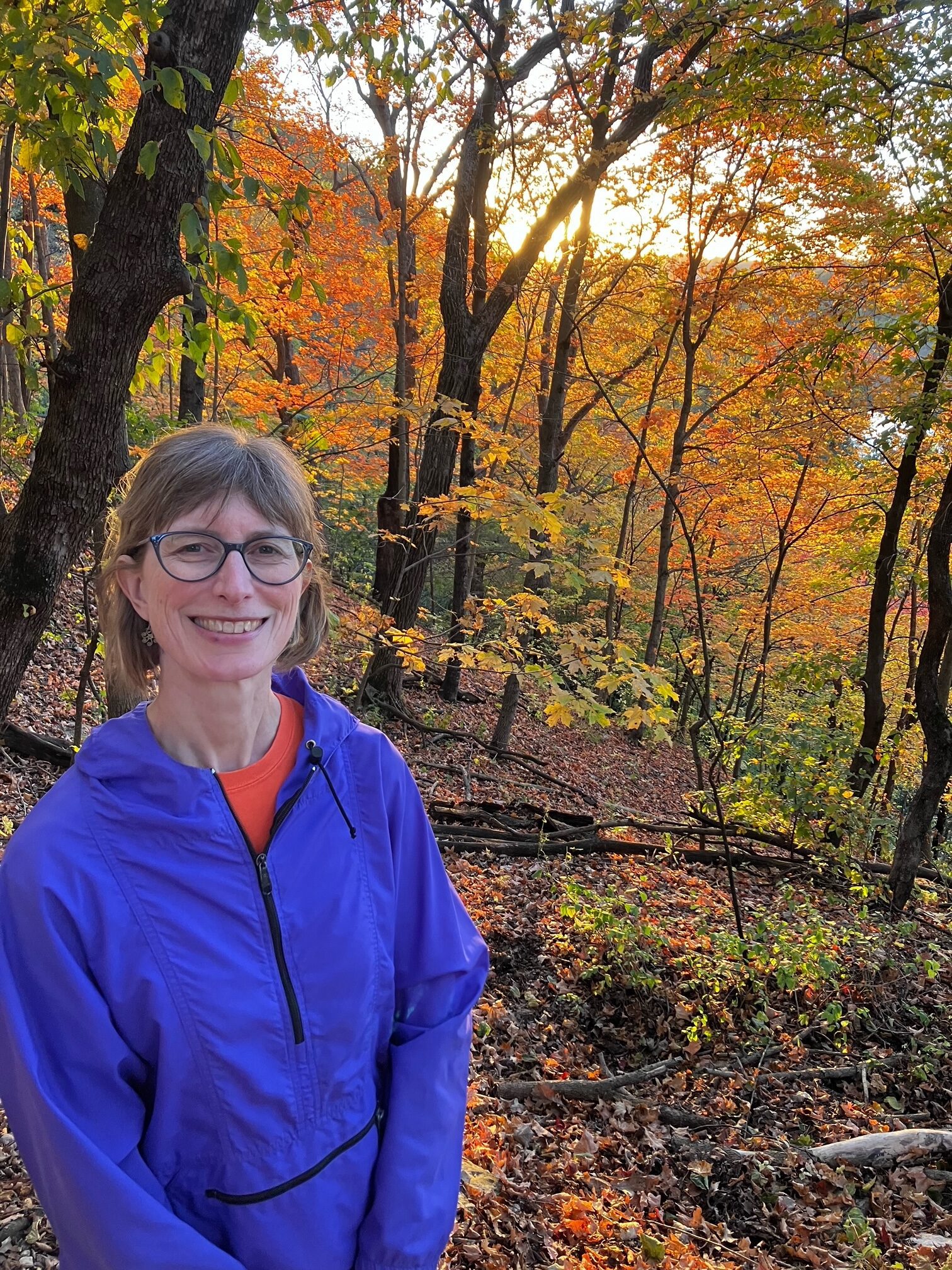
Laura Barlament
Laura Barlament lives in Decorah, Iowa, where she works at Luther College.
NORTHEAST IOWA ARTISTS’ STUDIO TOUR 2025
Mark your calendars for the 28th Annual Northeast Iowa Artists’ Studio Tour, October 10, 11, and 12. Workspaces are open from 10 am to 5 pm each day. Five new artists will join the tour this year, opening their spaces along with long-time exhibitors for 36 artists in total. This free tour offers behind-the-scenes studio views at 29 locations all within 40 miles of Decorah, Iowa. Set your own pace as you drive yourself around the Driftless to check out and purchase awesome local pottery, paintings, woodcuts, baskets, jewelry, woodworking, sculpture, collage, fiber arts, and more. Find a tour map online at iowaarttour.com.





